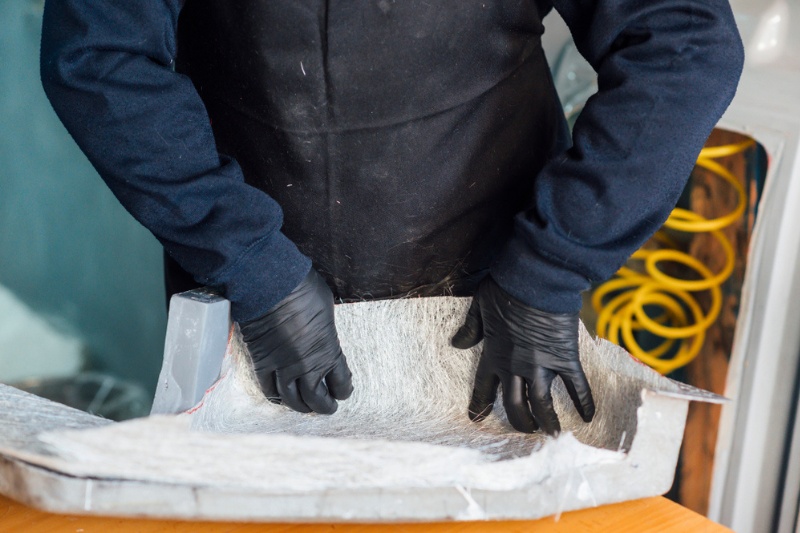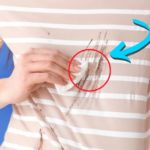Accidents can happen, and sometimes, that means finding unexpected materials embedded in our clothes.
One such unwelcome surprise is fibreglass. Whether you’ve been working on DIY projects, handling insulation, or renovating your home, fibreglass fibres can easily find their way into your clothing, leading to discomfort and irritation.
In this guide, we’ll explore the methods to effectively remove fibreglass from clothes and have some tips about staying protected in the future, too.
First Steps to Removing Fibreglass from Clothing

Prevention is key
Preventing fibreglass from embedding itself into your clothing is the first line of defence.
When working with fibreglass, consider wearing appropriate protective clothing like overalls or coveralls made of tightly woven fabrics.
Also, opt for long sleeves, gloves, and safety goggles to minimise skin exposure. By taking these precautions, you can significantly reduce the risk of fibreglass particles getting trapped in your clothes.
You can then ensure you only use this clothing for this type of work and wear disposal overalls and dispose of them after use.
Act quickly
If you’ve discovered fibreglass on your clothes, it’s important to act quickly. Delaying the removal process can worsen the irritation and make it more challenging to eliminate the fibres. Here’s what you can do.
Avoid shaking or agitating the clothing
Fibreglass fibres are minuscule and can become airborne easily. Gently remove the clothing and avoid any aggressive movements that might release more fibres into the air.
Consider keeping your safety glasses and gloves on when removing the clothing, if possible. This will prevent the fibreglass from getting on your skin or in your eyes.
Head outdoors
To prevent spreading the fibres inside your home, take the affected clothing outdoors. Find an area where the wind can help disperse any loose fibres.
Your washing line is a good place. Just ensure no other clothes are on the washing line at the time.

Shake and pat down
Gently shake the clothing to dislodge any visible fibres. Then, lightly pat the fabric to encourage loose fibres to fall away. Wearing gloves for this will prevent any fibres from sticking in your skin.
The Washing Process
Once you’ve taken the initial steps to remove visible fibreglass, it’s time to clean the clothing thoroughly.
Follow these steps to ensure that your clothes are fibreglass-free.
1. Machine wash with cold water
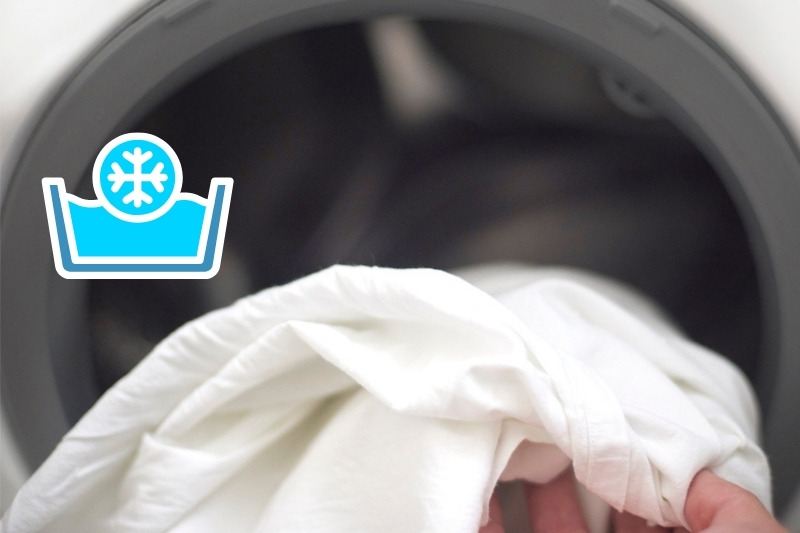
Place the contaminated clothing in the washing machine. Use cold water and choose a longer cycle to help dislodge any remaining fibres.
Avoid using hot water or high heat settings on your washing machine. This can cause the fibres to stick to certain fabrics even more, making them very difficult to remove.
2. Extra rinse
After the regular wash cycle has finished, run an extra rinse cycle to ensure that any loose fibres are thoroughly removed. This will help to further relax the fabric and draw out any remaining fibreglass fibres.
3. Clean the washing machine
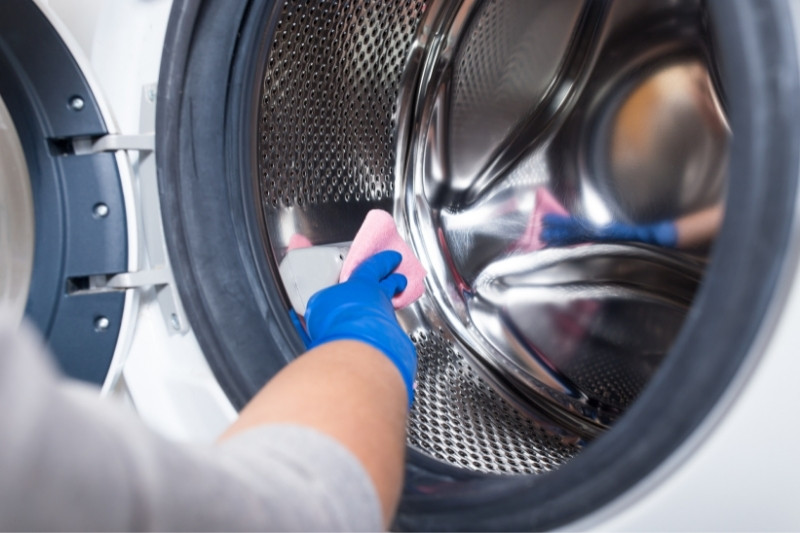
Fibreglass particles may linger in your washing machine after cleaning the clothes. To prevent cross-contamination, run an empty cycle with cold water and a cup of white vinegar to clean the machine.
This also works great for cleaning the machine after other very soiled loads of washing, too, so it is a great trick to keep in your back pocket.
4. Post-wash inspection
Even after washing, it’s a good idea to inspect the clothing to ensure that no fibreglass fibres remain.
Hold the clothing up to the light and carefully examine it. If you spot any lingering fibres, repeat the washing process or consider using alternative methods to remove them.
Some Alternative Methods for Removing Fibreglass from Clothing
Use tape or a lint roller

For stubborn fibreglass fibres that refuse to leave your clothing, tape or a lint roller can be effective tools.
A standard lint roller will work wonders for this, or if you have some packing tape or duct tape, you can wrap this around your hand (with the sticky side facing out) and pat the fabric down.
Lint rollers and tape do a brilliant job at removing any remaining fibres of fibreglass from clothing.
We wouldn’t recommend this to remove lots of fibres as it will take a while. However, for removing the last few remaining fibres, this is a brilliant method.
Freezing method
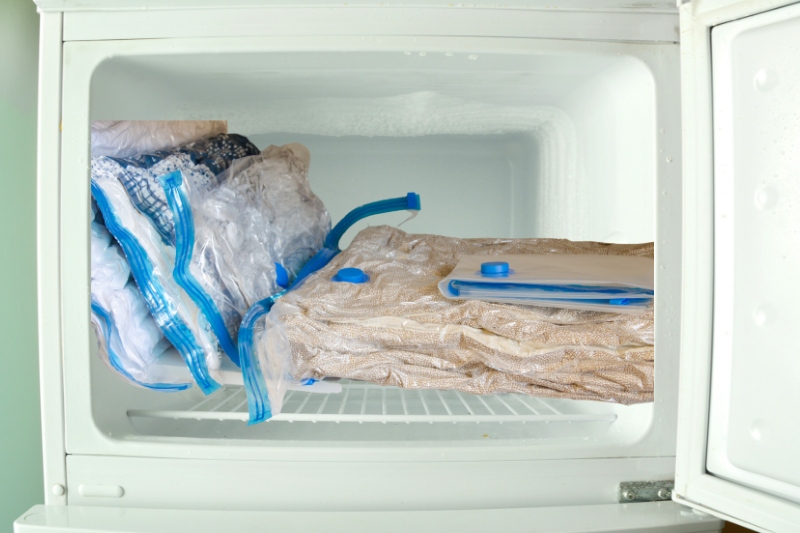
If other methods fail, you can try the freezing method to remove persistent fibreglass. It may seem a bit strange to freeze your clothes, but there is method to the madness. Here’s how the freezing method works:
1. Bag the clothing
Place the affected clothing in a plastic bag (like a sandwich bag, for example) and seal it tightly.
2. Freeze the clothing
Put the bag in the freezer and leave it for a few hours. The cold temperature causes the fibreglass fibres to become brittle.
3. Pat and shake
Take the clothing out of the freezer and gently pat and shake it to dislodge the frozen, brittle fibres. This method can all but eliminate the fibres in your clothing.
Once you’re sure you’ve removed as much as possible, pop the clothes in the washing machine, run a cold cycle, and the clothes should come out fibre-free.
Safety First
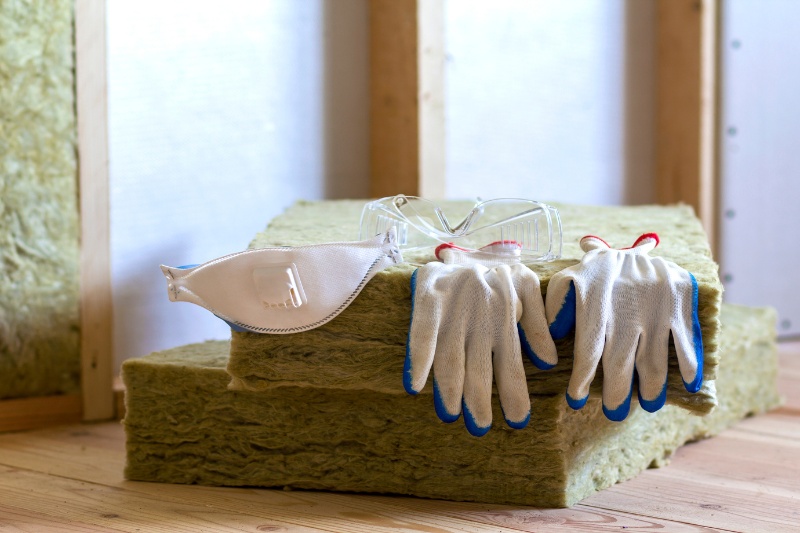
Throughout the process of removing fibreglass from clothes, it’s crucial to prioritise safety. Wear gloves, a mask, and protective eyewear to prevent direct contact with the fibres.
Also, wash your hands thoroughly after handling the clothing and cleaning tools.
Fibreglass is a dangerous material to work with, so please be careful when handling it and any clothing that has come into contact with it.
In Conclusion
Discovering fibreglass in your clothes might be an unpleasant surprise, but with the right techniques, you can effectively remove these irritating fibres.
By taking preventative measures, acting promptly, and using the appropriate cleaning methods, you can enjoy comfortable and fibreglass-free clothing once again.
Remember, safety is paramount, so don’t forget to protect yourself during the removal process.
For more laundry and stain removal tips and tricks just like this one, please explore In The Wash further.

In The Wash is your guide to the best laundry and cleaning products, tips and tricks. Our mission is to solve the UK’s cleaning and laundry dilemmas!
